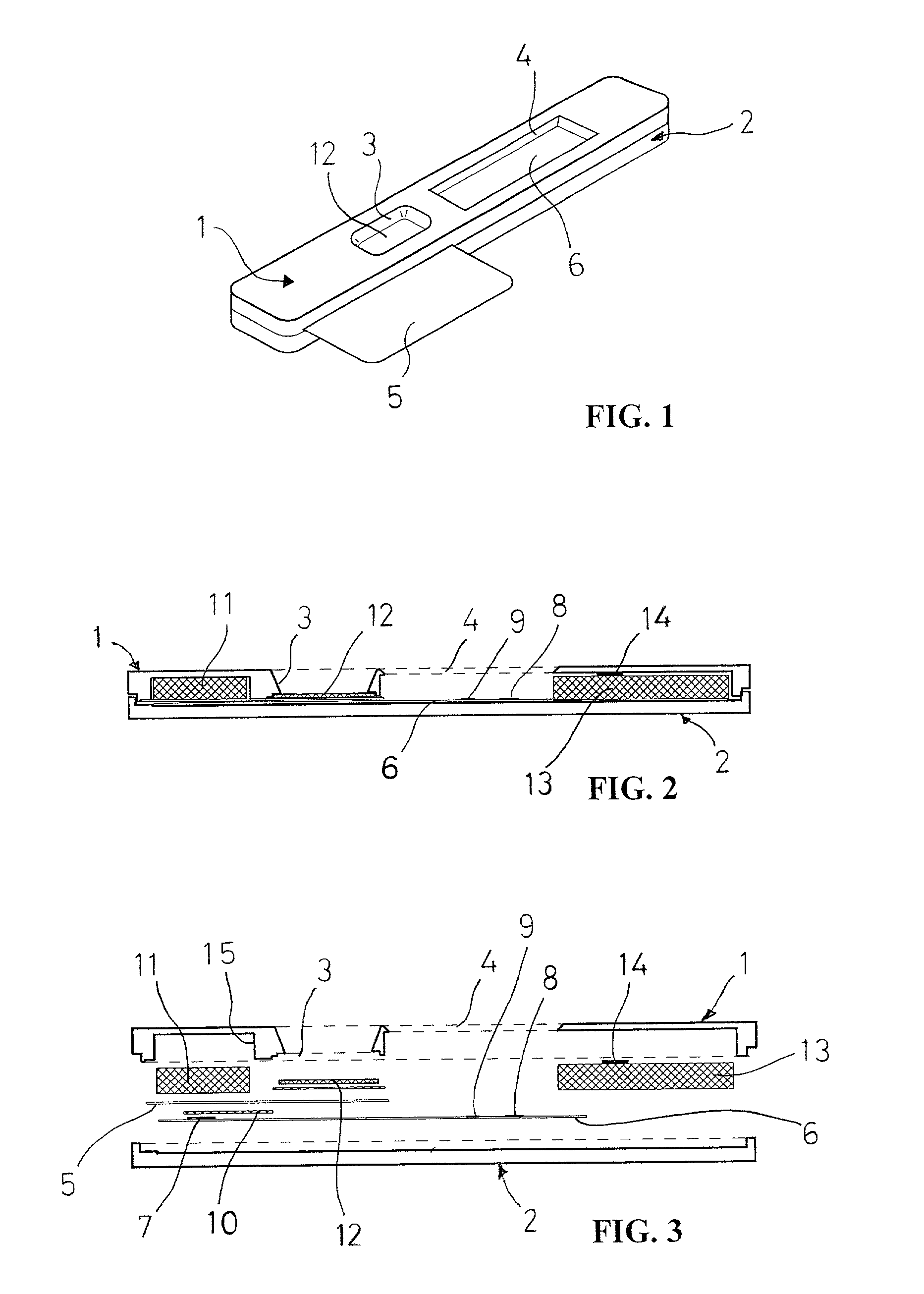Assay device with timer function
a timer function and solid phase assay technology, which is applied in the direction of biomass after-treatment, analysis using chemical indicators, instruments, etc., can solve the problems of not being able to adjust the time elapsed, and not being able to be readily done, so as to reduce the shelf life of the device
- Summary
- Abstract
- Description
- Claims
- Application Information
AI Technical Summary
Benefits of technology
Problems solved by technology
Method used
Image
Examples
Embodiment Construction
[0029]The assay device according to the present invention is provided with a time indicator that exhibits a colour change when the applied sample or other assay liquid reaches a defined position on a wicking member placed at the end of the flow matrix. In the following, the invention is illustrated applied to an assay device described in our co-pending Swedish patent application No. 9904175-8.
[0030]As best shown in FIG. 1, the device illustrated in FIGS. 1 to 3 comprises an upper housing part 1 and lower housing part 2 of a material which is inert with respect to the sample and any reagents used in the assays to be conducted with the device, e.g. polystyrene or polypropylene. The upper housing part 1 has a sample well aperture 3 (here conical) and a detection window 4. Also shown in FIG. 1 is a removable separation means 5 to be described below.
[0031]With reference now to FIGS. 2 and 3, the lower housing part 2 has mounted therein a membrane strip 6 of bibulous material (i.e. a poro...
PUM
 Login to View More
Login to View More Abstract
Description
Claims
Application Information
 Login to View More
Login to View More - R&D
- Intellectual Property
- Life Sciences
- Materials
- Tech Scout
- Unparalleled Data Quality
- Higher Quality Content
- 60% Fewer Hallucinations
Browse by: Latest US Patents, China's latest patents, Technical Efficacy Thesaurus, Application Domain, Technology Topic, Popular Technical Reports.
© 2025 PatSnap. All rights reserved.Legal|Privacy policy|Modern Slavery Act Transparency Statement|Sitemap|About US| Contact US: help@patsnap.com


